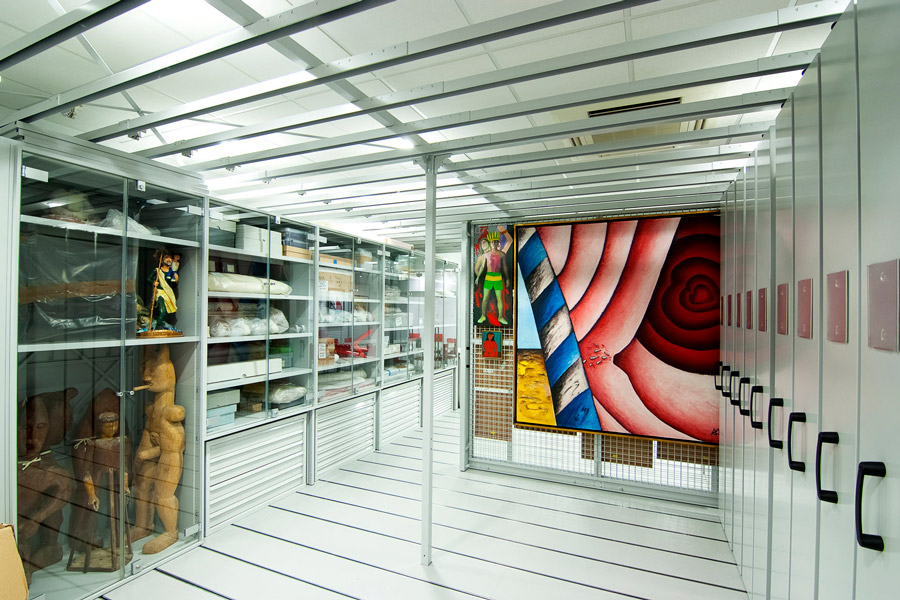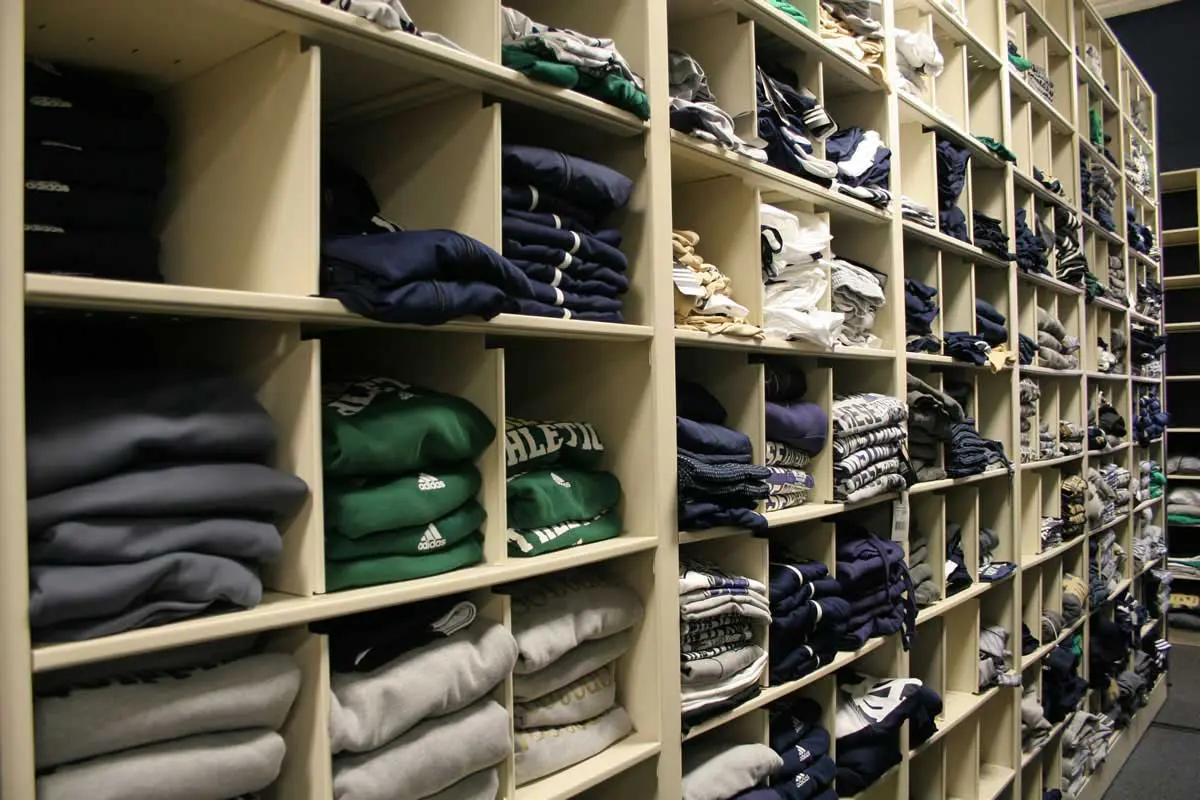
Museums serve as guardians of our cultural heritage, housing priceless artifacts, artworks, and historical treasures that tell the story of our past. Preserving these valuable items requires careful consideration of storage solutions, and one crucial element in museum storage is heavy-duty shelving. In this blog post, we delve into the world of heavy-duty shelving in museums, exploring how it balances aesthetics and durability to safeguard our cultural riches.
Aesthetic Appeal in Museums
Museums are not only repositories of history and art but also spaces where aesthetics play a significant role. The way artifacts and artworks are displayed can enhance the visitor experience and provide context to the items on exhibit. Therefore, museum shelving systems must strike a balance between functionality and aesthetics.
Heavy-duty shelving is an ideal choice for museums because it can support the weight of various artifacts and artworks while also contributing to the overall visual appeal of the exhibits. These shelves are designed with an eye for detail, often featuring sleek, minimalist designs that blend seamlessly with the museum’s interior.
Preservation of Cultural Treasures
The primary role of museums is to preserve cultural treasures for future generations. These treasures often include delicate items that require precise environmental conditions to maintain their integrity. Heavy-duty shelving systems are not only aesthetically pleasing but also provide the necessary protection for these items.
One key aspect of preservation is controlling temperature and humidity. Many heavy-duty shelving units in museums are designed with features that help maintain stable environmental conditions. For example, some shelving systems come with built-in climate control options, ensuring that artifacts and artworks are shielded from temperature fluctuations and excess moisture.
Adaptability to Different Artifacts
Museums house a diverse range of artifacts, each with its own unique storage requirements. Heavy-duty shelving systems are highly adaptable, making them suitable for storing a wide variety of items, from sculptures and ceramics to documents and textiles.
Adjustable shelves and modular designs allow museum staff to configure the shelving units to accommodate different artifact sizes and shapes. This versatility ensures that the storage system can evolve to meet the changing needs of the museum’s collection.
Durability and Longevity
The durability of heavy-duty shelving is a paramount consideration for museums. These shelves are engineered to withstand heavy loads over extended periods, ensuring that they can support even the largest and heaviest artifacts.
Museum collections are often meant to last for generations, and the shelving systems should be no different. Investing in high-quality heavy-duty shelving ensures that the storage solution will stand the test of time, providing reliable support for the museum’s collection for many years to come.
Enhanced Security
Security is a top priority in museums, as the items on display are often irreplaceable. Heavy-duty shelving systems can be equipped with advanced security features to protect valuable artifacts from theft or damage. These features may include locking mechanisms, tamper-resistant materials, and surveillance integration.
In addition to deterring theft, heavy-duty shelving systems can also safeguard artifacts from accidental damage. Sturdy construction and precision engineering minimize the risk of shelves collapsing or items falling, further ensuring the safety of the collection.
Maximizing Storage Space
Efficient use of space is crucial in museums, as available square footage is often limited. Heavy-duty shelving systems are designed to maximize storage space by utilizing vertical space effectively. This vertical storage not only increases the museum’s storage capacity but also allows for a more organized and accessible collection.
In addition to vertical storage, some heavy-duty shelving systems come with features like pull-out drawers, sliding panels, and compact shelving that allow for easy access to stored items, even in tight spaces.
Integration with Exhibit Design
While heavy-duty shelving primarily serves a utilitarian function in storage areas, it can also play a role in exhibit design. Museums can integrate these shelving systems into their exhibit displays, creating a seamless transition between storage and exhibition.
For example, transparent shelving units can be used to showcase items that are not currently on exhibit, providing visitors with a glimpse of the museum’s vast collection. The integration of shelving into exhibits adds depth and context to the visitor experience.
FAQ
1. How do heavy-duty shelving systems ensure the safety of fragile artifacts?
Heavy-duty shelving systems are designed with stability and durability in mind. They often feature reinforced materials, adjustable shelves, and secure locking mechanisms to prevent accidents and damage to fragile artifacts.
2. Can heavy-duty shelving systems be customized to fit specific museum storage needs?
Yes, many manufacturers offer customization options for heavy-duty shelving systems, allowing museums to tailor the design, dimensions, and features to their unique storage requirements.
3. What types of security features can be added to heavy-duty shelving in museums?
Security features can include lockable cabinets, access control systems, intrusion detection, and integration with museum-wide security protocols.
4. Are heavy-duty shelving systems easy to maintain and clean?
Yes, heavy-duty shelving systems are typically designed for ease of maintenance. They are constructed from materials that are resistant to corrosion and can be cleaned with standard museum cleaning procedures.
5. How do heavy-duty shelving systems contribute to space efficiency in museums?
Heavy-duty shelving systems are designed to make the most of available vertical space, allowing museums to maximize their storage capacity. Some systems also feature space-saving mechanisms like sliding shelves and compact storage options.
6. Can heavy-duty shelving systems be relocated or reconfigured as museum collections grow?
Yes, many heavy-duty shelving systems are modular and can be easily relocated or reconfigured to accommodate the changing needs of the museum’s collection.
7. Do heavy-duty shelving systems have a weight limit for the items they can support?
Heavy-duty shelving systems are engineered to support heavy loads, but weight limits can vary depending on the specific design and materials used. Museums should consult with the manufacturer to determine the weight capacity of their chosen shelving system.
8. How can museums ensure that heavy-duty shelving systems align with their aesthetic goals?
Museums can choose from a variety of designs, materials, and finishes to ensure that heavy-duty shelving systems blend seamlessly with their aesthetic preferences and interior design.
9. Are heavy-duty shelving systems a cost-effective investment for museums?
Yes, heavy-duty shelving systems are a cost-effective investment for museums due to their durability and longevity. They offer long-term storage solutions that require minimal maintenance and replacement.
10. Can heavy-duty shelving systems be used in historical buildings or spaces with architectural constraints?
Yes, many heavy-duty shelving systems are designed to be adaptable and can be installed in historical or architecturally constrained spaces with minimal impact on the building’s structure.



